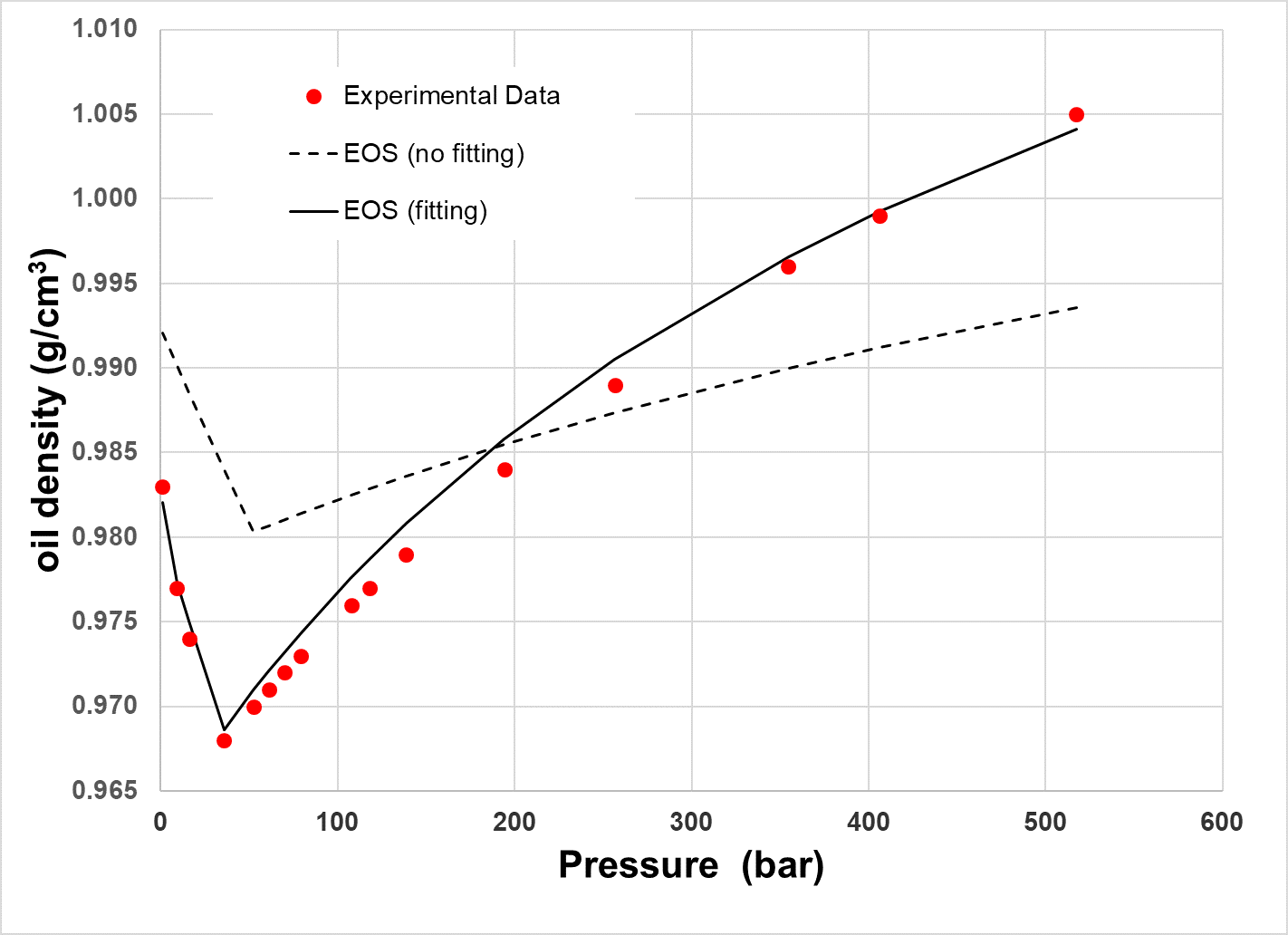ENERXICO has developed supercomputing technologies for the Oil & Gas industry, and as part of this has developed its own PVT fluid characterization package, with the primary objective of providing fluid properties to the Black Hole Oil Reservoir simulator code. This package can be used to characterize and calculate properties for a wide range of reservoir fluids, from gas & condensate to extra-heavy fluids found in reservoirs around the world.
Thermodynamic Model and Characterization process
The PVT fluid characterization package is based in multiphase equilibrium calculations with the aid of an equation of state (EOS) as PVT relationships. In the package, the selected model is a van der Waals like equation, the well-known Peng – Robinson cubic EOS with a mixing rule that depends on the kind of components present in the fluid. For mixtures of non-polar and slightly-polar components, the one parameter van der Waals mixing rule is used. For mixtures of non-polar and highly-polar components (like water), a Huron – Vidal asymmetric mixing rule is used. This framework allows the calculation of equilibrium conditions for two phase (Vapor – Liquid) and three phase systems (Vapor – Liquid – Liquid) with a high degree of accuracy.
The package also incorporates a characterization strategy to handle the heavier components found in reservoir fluids, a group of components also known as heavy fraction Cn+. In this strategy, the heavy fraction is transformed into a given number of fragments or pseudo-components with properties estimated from correlations. Only some average properties from the heavy fraction are used for this purpose, such as specific gravity and Molecular Weight. The result of the characterization process, along with the other defined components, is a list of components (defined and pseudo-components) that describe the overall composition of the reservoir fluid. This composition is in the required format needed by the EOS.
Predicting fluid properties and matching experimental data
The characterized fluid information along with the EOS is used to calculate volumetric, thermal and transport properties under different Temperature and Pressure conditions in the Reservoir Simulator. In order to provide the best possible prediction of these fluid properties, such as density and viscosity, some experimental data for the particular fluid of interest must be available so the EOS parameters can be tuned to match this experimental information. This procedure is of fundamental importance to achieve a reasonable prediction of the desired properties. Figures 1 and 2 show the comparison between an EOS calculation with no tuning and the EOS calculation after the tuning process has been completed, along with the experimental data.

Figure 1 shows the oil density as pressure function for a constant temperature and illustrates the need of a tuning process to improve the EOS calculations. The EOS calculation with no tuning, qualitatively shows the same trend as the experimental data, however exhibit a systematic deviation at low and high pressures. Additionally, the calculated fluid compressibility at high pressures is different from the one showed by the data. In contrast, the EOS calculation after the tuning process has a good representation of the oil density in the entire pressure interval.
Figures 2a and 2b show the Pressure – Temperature phase envelope with no tuning (2a) and after the tuning process has been completed (2b). Figure 2a shows the EOS calculation slightly agree with the experimental data for the original reservoir fluid. However, the EOS prediction for N2 injection at two different concentrations largely deviate from the data. On the other hand, Figure 2b shows a good agreement of the EOS calculation when compared to the original reservoir and the two N2 injection data.
Figure 2 – Pressure – Temperature Phase Diagram for a Mexican heavy oil, including N2 injection data. Points – Experimental data, Continuous Line – EOS calculation. a) EOS Calculation, no tuning, b) EOS Calculation after tuning procedure.
However, the tuning process is not so easy or evident to perform and may take days or even weeks for an expert to get a good match. This complexity is due to the hundreds of different parameters (pure component and binary parameters) that may be subject to tuning. Several approaches can be used to perform this task, from a simple minimization of an objective function tuning a selected set of EOS parameters, to the use of Artificial Intelligence (AI) techniques in order to parametrize and automate the whole process. ENERXICO is also working in the use of AI in this particular application.
Sending the calculated properties to the Reservoir Simulator
Two approaches are being tested to incorporate the properties from the PVT fluid characterization package into the Reservoir Simulator:
a) Table containing properties and a two-dimension interpolator.
b) Executing the actual EOS in the Simulator Code.
The first option is the least computational expensive approach but can only be used if the reservoir fluid is not altered by any additional process, such as gas injection or in-situ combustion processes. For these cases, the second option is selected.
Additional applications of the PVT fluid characterization package
The package can be used as a tool to perform studies of the thermodynamic behavior of reservoir fluids. In this context, PEMEX, the Mexican oil company, has been using the package to study production scenarios and reservoir stimulation strategies for different oil fields. From gas injection processes (N2, CO2 and H2O) intended to modify dew point conditions to miscible displacement and swelling effect on the reservoir fluid.
Written by:
Jaime Klapp, Humberto Hinojosa and Moises Hernández (Instituto Nacional de Investigaciones Nucleares)
Leonardo Sigalotti (Universidad Autónoma Metropolitana-Azcapotzalco)
